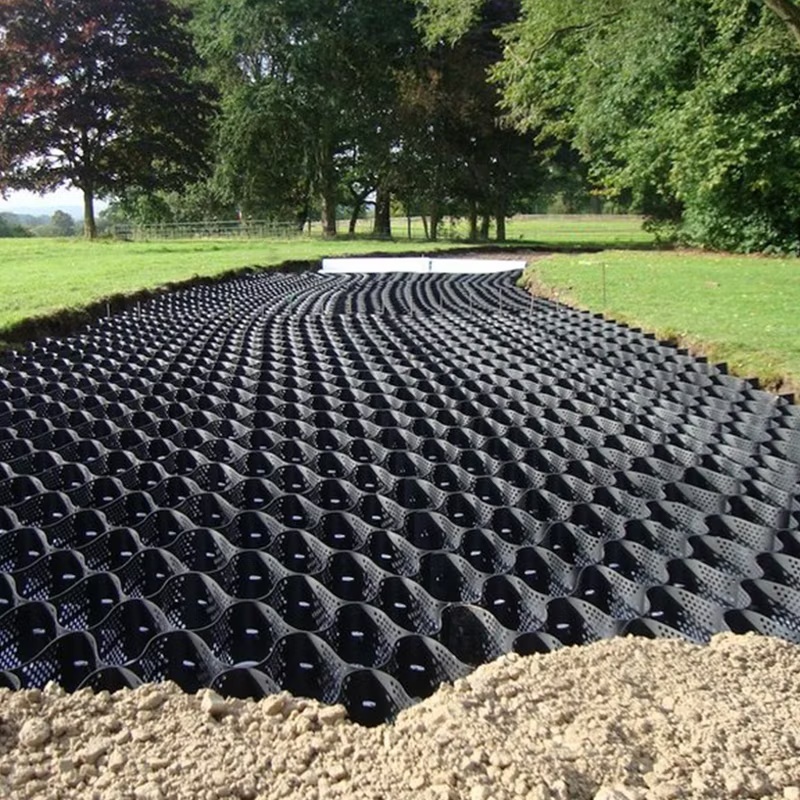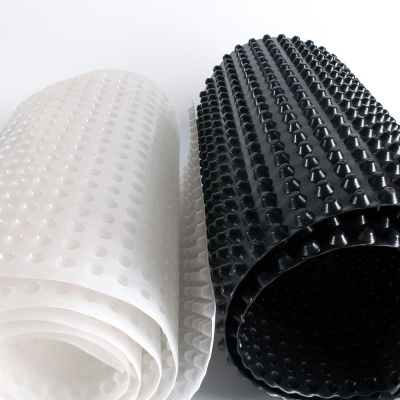Practical Application of Geocells for Preventing Cracks in Parking Lot Surfaces
Ever walked through a parking lot and winced at those ugly cracks snaking across the asphalt? I know I have. They don’t just look bad—over time, they turn into potholes that can mess up your car’s tires, and uneven surfaces that trip up pedestrians. For anyone who owns or manages a property with a parking lot, fixing those cracks feels like a never-ending battle. You fill them once, and six months later, they’re back. It’s expensive, too—resurfacing a small commercial lot can cost thousands, and you’re doing it every couple of years.
But here’s something I’ve been seeing more lately that actually works: using geocells to reinforce the ground under the parking lot. Specifically, a geocell driveway system—even though it’s called a “driveway” system, it works just as well for parking lots. It’s not some fancy new tech, either. It’s a simple way to stop cracks before they start and make your pavement last way longer. Let me break down how it works, why it’s worth it, and how you’d actually put it in.
Why Parking Lots Crack (and How Geocells Fix the Root Cause)
First, let’s get real about why parking lots crack. It’s almost never just “old age.” Most of the time, it’s two things: the soil under the pavement moving, and all that weight from cars.
Think about it. When it rains, water seeps into the soil beneath the asphalt or concrete. That softens the dirt, so when a car drives over it, the ground shifts a little. Do that enough times, and small gaps form under the pavement. Then, when winter hits, that water freezes and expands—pushing the pavement up. When it thaws, the ground shrinks, leaving even bigger gaps. Eventually, the pavement can’t handle it anymore, and it cracks.
The usual fixes? Filling cracks with sealant or resurfacing. But those just cover the problem, not fix it. The soil’s still moving, so the cracks come back. That’s where geocells help. A geocell driveway system is basically a grid of flexible plastic cells—like a big, tough honeycomb. You lay that grid over the soil before you put down the pavement. The cells lock the soil (and the gravel base you put in them) in place. So when a car drives over, the weight spreads out evenly—no single spot gets crushed. And the soil can’t shift or wash away. It’s like giving the pavement a solid, unshakable foundation.
What makes this a go-to solution? It’s not hard to work with. Contractors I’ve talked to say it doesn’t add much time to the project. And compared to fixing cracks every year, it’s cheap. Plus, it works with asphalt, concrete, even gravel—whatever your parking lot’s made of.
How to Install a Geocell System for a Parking Lot (Step-by-Step for Regular Use)
You don’t need a team of experts to install a geocell driveway system. I’ve seen small construction crews do it with basic tools—shovels, a compactor, maybe some clips. Here’s how it usually goes, tailored for parking lots:
First, prep the site. You gotta clear out all the junk—old pavement chunks, weeds, rocks. Then, you grade the soil so it’s level. If the ground’s bumpy, the geocells won’t lay right, and that defeats the purpose. A lot of guys add a thin layer of compacted gravel here, too. Why? Because standing water is the enemy—gravel helps drain it away before it soaks into the soil.
Next, lay the geocells. They come folded up in rolls, so you just unroll them and pull them apart to expand the grid. The key here is overlapping the edges—at least 6 inches. If you don’t, you’ll have gaps, and the soil can shift through those. For bigger lots, they use zip ties or small clips to hold the overlapping parts together. It’s a quick step, but it makes the whole thing sturdier.
Then, fill the cells. You use crushed stone or gravel—something that packs tight. You don’t just dump it in, though. You fill a section, then run a plate compactor over it to press it down hard. If you skip compacting, the gravel will settle later, and the pavement will sink. Most parking lots only need one layer of compacted gravel, but if you get heavy trucks (like delivery vans), you might add a second layer.
Finally, add the pavement. Asphalt, concrete, whatever you’re using. The geocell layer under it will hold everything up. Even if the soil shifts a little (which it will), the geocells keep the base stable, so the pavement doesn’t crack.
The best part? It doesn’t take that much longer than a regular parking lot job. You’re just adding one extra step, and it saves you so much hassle later. And since the geocells are flexible, they work even if your parking lot has weird shapes—you don’t have to make it a perfect rectangle.
Long-Term Benefits of Using Geocells in Parking Lots (Beyond Crack Prevention)
Stopping cracks is great, but a geocell driveway system has other perks that make it worth it for property owners. Let me tell you about the ones I’ve heard most:
First, save money on maintenance. Let’s say your small lot costs \(5,000 to resurface every 3 years. With geocells, you might only need to resurface every 7 years. Over 10 years, that’s \)5,000 vs. almost $17,000. That’s a huge difference. And the small cracks you do get? You can seal them in an afternoon, no big demo needed.
Second, it holds up in bad weather. I live in the Northeast, where winters are brutal—freezing, thawing, snow plows scraping the pavement. Geocells stop water from getting under the pavement, so there’s less freeze-thaw damage. In the summer, too—asphalt can get soft in the heat, but the geocell base keeps it from warping.
Third, better drainage. Have you ever walked through a parking lot after rain and stepped in a puddle up to your ankle? Geocells fix that. The open cells let water drain through the gravel and into the soil, instead of pooling on top. That means less hydroplaning for cars, and no more muddy mess for pedestrians.
And fourth, it’s easy to expand later. If you need to make the parking lot bigger, you just add more geocells. They connect to the old ones, so it looks seamless. With concrete, you’d have to break up the old stuff and start over—geocells let you expand without the hassle.
Common Myths About Geocells for Parking Lots (And Why They’re Wrong)
I hear a lot of wrong things about geocells. Let’s set the record straight, because a geocell driveway system is way more useful than people think:
Myth 1: “They’re too expensive.” Yeah, you pay a little more upfront. But think about it—you’re paying once instead of paying for repairs every year. And if you ever need to take them out (like for a major renovation), you can reuse them. That’s a one-time cost, not a recurring one.
Myth 2: “They only work for gravel driveways.” Nope. I’ve seen them under asphalt parking lots at malls, concrete lots at offices, even grass lots at parks (for eco-friendly spots). The geocells just hold the base stable—what’s on top doesn’t matter.
Myth 3: “Installation is hard.” I talked to a contractor last month who said his crew did a 5,000-square-foot lot in two days, including geocells. You don’t need special tools—just a compactor and some basic know-how. Most crews pick it up on the first day.
Myth 4: “They can’t handle heavy cars.” Geocells are made of tough plastic—HDPE or polypropylene. I’ve seen them hold up to delivery trucks that weigh 10,000 pounds. They don’t bend or break. Industrial lots use them all the time for heavy vehicles.
When to Choose a Geocell System for Your Parking Lot (Regular Scenarios)
Now, when should you actually use a geocell driveway system? Here are the times it makes the most sense:
If you’re building a new parking lot. Why wait for cracks to happen? Add geocells during installation, and you’ll never have to deal with early cracking. It’s a small step that saves you big later.
If your old lot is full of cracks. Resurfacing without geocells is a waste—those cracks will be back in a year. Add geocells to fix the soil problem, then resurface. It’s a long-term fix.
If you live in a wet or cold climate. Rain and freeze-thaw are the biggest causes of cracks. Geocells drain water and stop freeze damage—perfect for places like the Pacific Northwest or the Midwest.
If your soil is soft. Sandy soil, clay soil—anything that shifts easily. Geocells stabilize it, so the pavement doesn’t sink or crack.
If you want an eco-friendly lot. Permeable pavers are big right now—they let water seep into the ground instead of running off. Geocells hold the pavers in place, so they work better and last longer.
Final Thoughts: Why Geocells Are a regular Solution for Parking Lot Crack Prevention
At the end of the day, a parking lot is an investment. You don’t want to spend money fixing it every year—you want it to look good and work well for as long as possible. A geocell driveway system does that. It’s not fancy, but it’s practical. It fixes the real problem (shifting soil) instead of covering up the symptoms (cracks).
Whether you’re a property manager trying to cut costs, a contractor wanting to offer better work to clients, or a homeowner building a small parking pad, geocells make sense. They’re not a trend—they’re a tool that’s been proven to work, all over the country.
If you’re tired of dealing with cracked pavement and endless repairs, give geocells a look. It’s one of those small changes that makes a huge difference in the long run. Your parking lot will last longer, your wallet will be happier, and you’ll stop cringing every time you walk across it.







